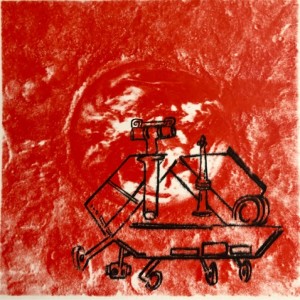
- Podcast Features
-
Monetization
-
Ads Marketplace
Join Ads Marketplace to earn through podcast sponsorships.
-
PodAds
Manage your ads with dynamic ad insertion capability.
-
Apple Podcasts Subscriptions Integration
Monetize with Apple Podcasts Subscriptions via Podbean.
-
Live Streaming
Earn rewards and recurring income from Fan Club membership.
-
Ads Marketplace
- Podbean App
-
Help and Support
-
Help Center
Get the answers and support you need.
-
Podbean Academy
Resources and guides to launch, grow, and monetize podcast.
-
Podbean Blog
Stay updated with the latest podcasting tips and trends.
-
What’s New
Check out our newest and recently released features!
-
Podcasting Smarter
Podcast interviews, best practices, and helpful tips.
-
Help Center
-
Popular Topics
-
How to Start a Podcast
The step-by-step guide to start your own podcast.
-
How to Start a Live Podcast
Create the best live podcast and engage your audience.
-
How to Monetize a Podcast
Tips on making the decision to monetize your podcast.
-
How to Promote Your Podcast
The best ways to get more eyes and ears on your podcast.
-
Podcast Advertising 101
Everything you need to know about podcast advertising.
-
Mobile Podcast Recording Guide
The ultimate guide to recording a podcast on your phone.
-
How to Use Group Recording
Steps to set up and use group recording in the Podbean app.
-
How to Start a Podcast
-
Podcasting
- Podcast Features
-
Monetization
-
Ads Marketplace
Join Ads Marketplace to earn through podcast sponsorships.
-
PodAds
Manage your ads with dynamic ad insertion capability.
-
Apple Podcasts Subscriptions Integration
Monetize with Apple Podcasts Subscriptions via Podbean.
-
Live Streaming
Earn rewards and recurring income from Fan Club membership.
-
Ads Marketplace
- Podbean App
- Advertisers
- Enterprise
- Pricing
-
Resources
-
Help and Support
-
Help Center
Get the answers and support you need.
-
Podbean Academy
Resources and guides to launch, grow, and monetize podcast.
-
Podbean Blog
Stay updated with the latest podcasting tips and trends.
-
What’s New
Check out our newest and recently released features!
-
Podcasting Smarter
Podcast interviews, best practices, and helpful tips.
-
Help Center
-
Popular Topics
-
How to Start a Podcast
The step-by-step guide to start your own podcast.
-
How to Start a Live Podcast
Create the best live podcast and engage your audience.
-
How to Monetize a Podcast
Tips on making the decision to monetize your podcast.
-
How to Promote Your Podcast
The best ways to get more eyes and ears on your podcast.
-
Podcast Advertising 101
Everything you need to know about podcast advertising.
-
Mobile Podcast Recording Guide
The ultimate guide to recording a podcast on your phone.
-
How to Use Group Recording
Steps to set up and use group recording in the Podbean app.
-
How to Start a Podcast
-
Help and Support
- Discover

3: Biology through the lens of a high-speed camera – Science: A Candle In The Dark
.
Science: A Candle In The Dark
Episode 3
Airdate: 28 April 2015
Host: Dr. Madhusudan Katti
Guest: Dr. Ulrike Müller
Commentary: Dr. Andrew Rhys Jones
Topic: Biomechanics applies principles from physics and engineering to understand how living organisms move and function as living machines. At the same time, an engineering perspective can be quite limiting in understanding how living systems evolve, because engineers are often focused on finding and designing optimal solutions, whereas evolution rewards solutions that are just good enough. Using high-speed cameras to observe and analyze in detail the too-fast-for-the-naked-eye-to-see movements of fish, and other small organisms—insects, carnivorous bladderworts (see image above)—Fresno State biologist Dr. Ulrike Müller studies how these tiny creatures seemingly defy engineering to move in remarkably efficient ways. Dr. Müller shares insights from her research, some thoughts on the silly creationist notion of intelligent design, and on structural constraints in education systems that limit the participation of women and other minorities in science. The interview with Dr, Müller is followed by a commentary by Dr. Andrew Rhys Jones on urban water policy and what social science tells us about human behavior in the context of California’s ongoing drought, and how science can inform policy during this crisis.
Note: Pardon the slight glitch in the recording where we were unable to capture the opening few seconds of the show, so it seems as if we are jumping into the middle of it – but its only a few seconds.
Image: A bladderwort. via Dr. Ulrike Müller
More Episodes
 2015-03-02
2015-03-02
 135
135
Create your
podcast in
minutes
- Full-featured podcast site
- Unlimited storage and bandwidth
- Comprehensive podcast stats
- Distribute to Apple Podcasts, Spotify, and more
- Make money with your podcast
It is Free
- Privacy Policy
- Cookie Policy
- Terms of Use
- Consent Preferences
- Copyright © 2015-2025 Podbean.com



